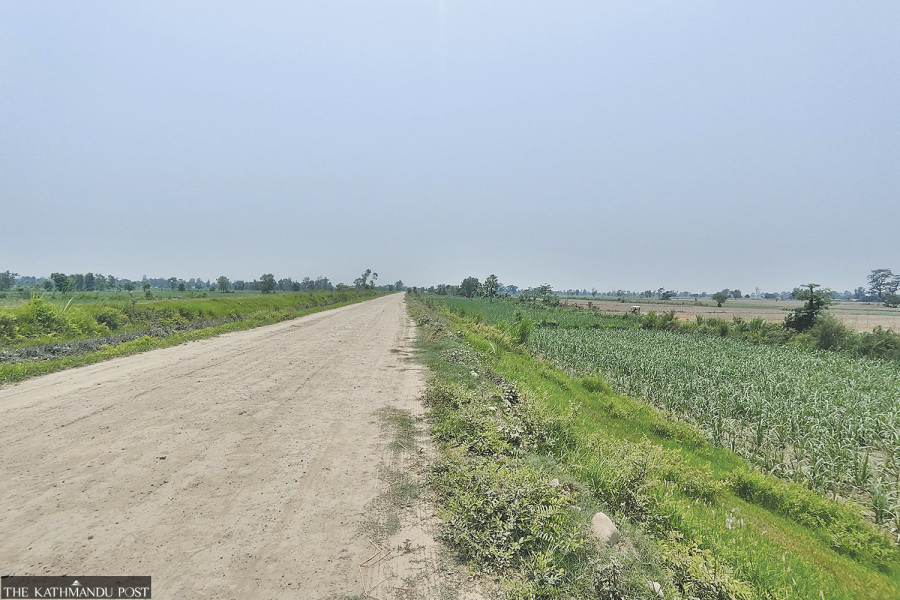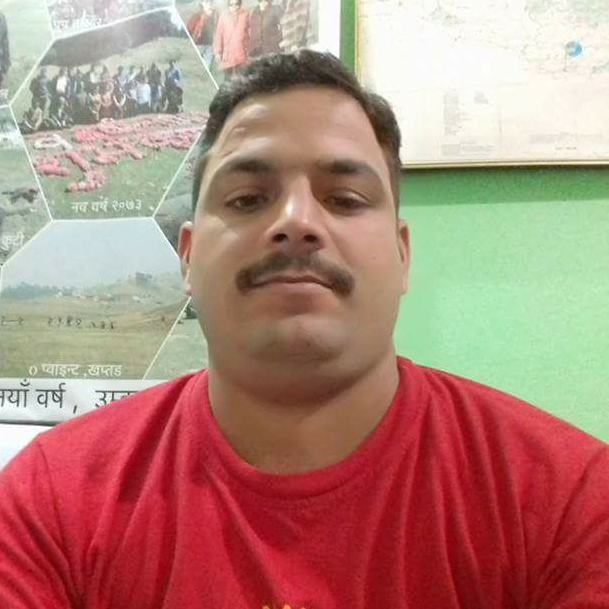National
People in Nepal-India border areas face hardships
Despite having land ownership certificates, the local residents cannot use their land for collateral for bank loans due to border disputes.
Bhawani Bhatta
Dilaraj Panta had taken Rs200,000 in loan from Rastriya Banijya Bank in 1998 keeping his 14 katthas of land as collateral. He repaid the loan within three years. In 2003, Panta decided to take loan again by using the same land as collateral. But Rastriya Banijya Bank refused to issue a loan this time stating that the loan could not be issued by maintaining the land as collateral. He also attempted to take a loan from other private banks but they denied it for the same reason.
Of late, various banks have set up their branches in the administrative centre of the local units. But Panta—who hails from Bhuda in Belauri Municipality-10, Kanchanpur—and many people like him are deprived of taking loans by using the land that lies near Nepal-India border as collateral.
Border disputes occur quite frequently in Bhuda area. There are border disputes in around a dozen of places in Kanchanpur district. And despite having land ownership certificates, the local residents cannot use the land for collateral for bank loans due to the border disputes. Even where there are no border disputes, the banks do not agree to issue loans by maintaining the land as collateral if the land is near the Nepal-India border.
Top Bahadur Chand of Bhuda faced a similar problem five years ago as he needed a bank loan to send his son abroad for further studies. He owned 10 katthas of land adjoining the no-man’s-land. But the government as well as private banking institutions refused to maintain the land as collateral for the loan. “I had no alternative to selling the land after the banks refused loans,” Chand said. “I needed Rs1 million. I had to sell the land at cheaper prices after I could not manage the loan.”
Like Panta and Chand, the local people living near the Nepal-India border are deprived of using their land for loan purposes. “The local people in the area are forced to borrow loans from money lenders at high interest rates as the financial institutions refuse to use our land for collateral,” Panta said. The local people urge the government authorities to ease their problem.
The Chaudhar river flows through the middle of Bhuda. The river is the natural border of two countries—eastern side is Nepal and western side is India. But the financial institutions set their own standards regarding the border for issuing loans. They do not use the land from 200 metres to one kilometre inside the Nepal-India border for collateral.
Pankaj Bhatta, manager of Nabil Bank in Belauri, said the insitution does not accept land up to 500 metres from the no-man’s-land and the criteria is even higher where there are border disputes. “The banks have their own internal directives and working guidelines,” Bhatta said. “They accept collateral only after risk evaluation.”
Nepal Bank Limited, the country’s oldest commercial bank, does not accept land within 200 metres from the no-man’s-land for collateral. “In the case of the disputed border area, we cannot use the land up to one kilometre from the border for collateral. The collateral is used based on risk evaluation,” said Mahesh Raj Joshi, manager of Mahendranagar branch of Nepal Bank Limited.
Generally, the lands that lie on the banks of the rivers or streams, lands that are not connected with roads, lands having legal complications, lands that are registered only before six months and the lands acquired by the government cannot be used as collateral for loan purposes. But the commercial banks make their own guidelines to reject the lands for collateral purposes.
Nepal Rastra Bank, the central bank of Nepal which regulates financial institutions, says that there is no such regulation regarding the land that borders with the no-man’s-land for collateral. “There are no such working guidelines that prevent using the lands adjoining Nepal-India for collateral,” said Bhagawat Acharya, assistant information officer at the Nepal Rastra Bank central office.
Not only the hassle in taking bank loans, the local people living near Nepal-India border have to endure several other problems. Seema Suraksha Bal (SSB) personnel sometimes prevent people from using the lands that they have land ownership certificates of, entering Nepali side with weapons and obstructing the carrying out development activities, among others.
Nepal and India share a 129.5-km-long border in Kanchanpur district. According to the information provided by the authorities, there are a total of 390 main, subsidiary and minor border pillars in the district. Among them, 32 pillars have gone missing while 41 pillars were damaged by the floods. Many other border pillars are in a dilapidated condition.
Due to the border disputes caused by the absence of border pillars, the local people claim that India’s SSB frequently interferes with construction activities including road construction on the Nepali side. They even create disturbances in tree plantation programmes in the community forests on the Nepali side of the border.
There are border disputes in Pyaratal to Aanandabazaar of Punarbas, Pachui and Bhuda areas of Belauri Municipality, Jhimlima of Beldadi Rural Municipality, Kutiyakbhar to Baduwatol of Dodhara Chandani Municipality and Bramhadev area of Bhumdutta Municipality in Kanchanpur.




 19.12°C Kathmandu
19.12°C Kathmandu

%20(1).jpg&w=200&height=120)













